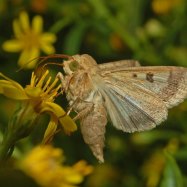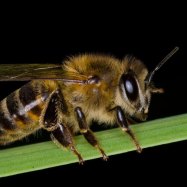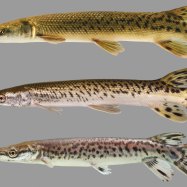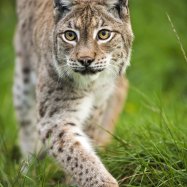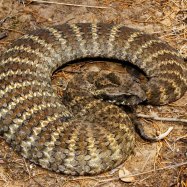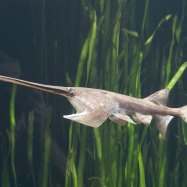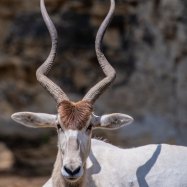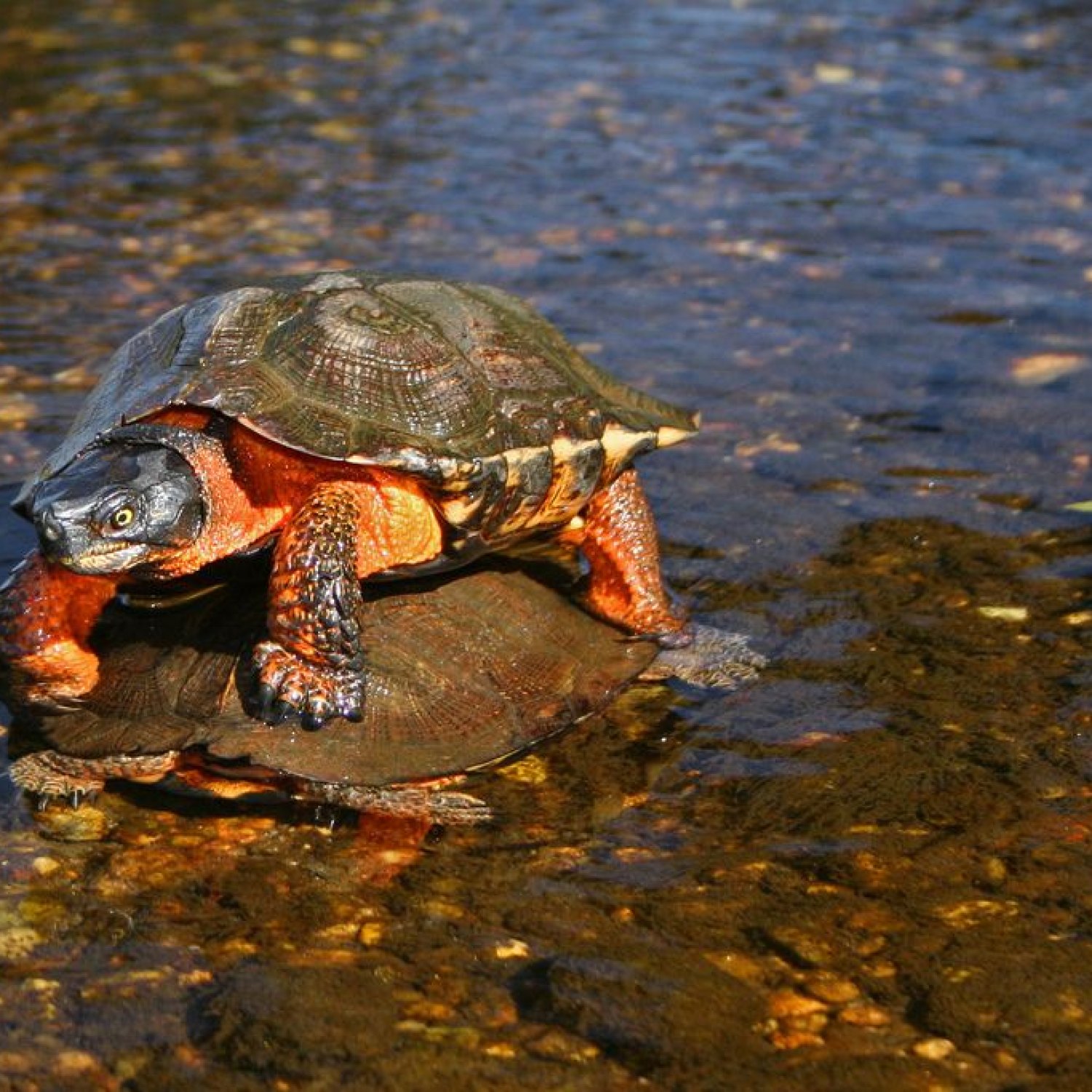
Wood Turtle
15-20 cm (5.9-7.9 in)
The Wood Turtle, found in the eastern and central parts of North America, is a medium-sized turtle with a high-domed shell and a slightly flattened oval shape. It can grow up to 15-20 cm (5.9-7.9 in) in length and is a member of the Emydidae family. Its distinct appearance and unique habitat make it a fascinating animal to learn about and protect. #WoodTurtle #NorthAmerica #Emydidae
Animal Details Summary:
Common Name: Wood Turtle
Kingdom: Animalia
Habitat: Wooded areas near freshwater sources
The Wood Turtle: A Unique and Endangered Species
The world is full of fascinating creatures, each with its own unique characteristics, behaviors, and habitats. Among the diverse array of animal species, lies an often overlooked but truly remarkable reptile - the Wood Turtle (Glyptemys insculpta). This small but mighty turtle captured the hearts of early explorers and naturalists with its stunning shell and charming personality. In this article, we will delve into the world of the Wood Turtle, uncovering its exceptional qualities, threats to its survival, and steps being taken to protect this endangered species Wood Turtle.From Kingdom to Geographical Distribution: The Basics of a Wood Turtle
Before diving deeper into the world of Wood Turtles, it's essential to understand a bit more about their classification and range. The Wood Turtle belongs to the Animalia kingdom, the Phylum Chordata, and the Class Reptilia, making it a reptile. It falls under the Order Testudines, commonly known as turtles or tortoises, and belongs to the Emydidae family. So, despite its interesting name, the Wood Turtle is indeed a turtle.Wood Turtles are native to North America, specifically the United States and Canada. They can be found in the eastern and central parts of North America, with a distribution range that extends from Nova Scotia and Ontario in Canada to Georgia and Alabama in the United States. These turtles have a preference for wooded areas near freshwater sources, which influences their habitat and feeding patterns.
A Unique Diet and Adaptable Body Shape
One of the defining features of Wood Turtles is their omnivorous diet. Unlike many other turtles, who tend to be either herbivores or carnivores, Wood Turtles have a diverse diet that includes both plants and animals Wolf Eel. This adaptable feeding behavior allows them to survive in various habitats and makes them crucial as ecosystem engineers, a term used to describe species that play a vital role in maintaining the balance of an ecosystem.The Wood Turtle's body is also uniquely adapted to its environment. These medium-sized turtles have a high-domed shell with a slightly flattened oval shape, allowing them to navigate through the diverse terrain of wooded areas. Their shell is also made up of intricate black or dark brown patterns with yellowish or orange markings, making them stand out in their surroundings. These markings also serve as a form of camouflage, helping them blend in with the fallen leaves and sunlight filtering through the trees.
Their legs and head have a brown color with yellow or orange patches, adding to their striking appearance. This coloration also serves as a form of temperature regulation, as the dark color absorbs heat, while the lighter patches help reflect it, allowing them to regulate their body temperature.
The Life of a Wood Turtle
The life cycle of a Wood Turtle is a fascinating one. These turtles can live up to 40-60 years in the wild, and they reach sexual maturity at around 14-18 years of age. During the breeding season, male Wood Turtles use a unique courtship behavior, which involves head movements and plastron (lower shell) vibrating, to attract females.Once the female lays her eggs, which can range from 3-18, usually in sandy, well-drained soils, she will cover them and return to her home range. The eggs will incubate for 75-130 days before hatching, and the sex of the hatchlings is determined by the temperature during incubation. Higher temperatures above 28 degrees Celsius result in females, while lower temperatures below 28 degrees Celsius result in males.
Wood Turtles are known to have a solitary and secretive nature, often hiding in the underbrush or burying themselves in the mud. However, they do not hibernate but rather enter a period of inactivity during the colder months, known as brumation. This period of reduced activity allows them to conserve energy and survive the harsh winters.
Threats to Survival
Despite their remarkable adaptations and long lifespan, Wood Turtles face numerous threats to their survival. The destruction of their habitat is one of the most significant factors contributing to their decline. As urbanization and development continue to spread, wooded areas are being converted into farmlands, roads, and buildings, leaving Wood Turtles with limited suitable habitats.Additionally, Wood Turtles are also threatened by road mortality, as they often lay their eggs near roadsides, and hatchlings can be hit by vehicles while trying to reach water sources. Climate change is another significant threat to this species, as it affects the temperature of the eggs during incubation and their ability to survive in their habitats.
Moreover, Wood Turtles are also heavily impacted by illegal human activities, such as poaching for the pet trade and collecting them for food. The combination of these threats has resulted in a steady decrease in Wood Turtle populations, with some areas reporting up to 70% population decline.
Conservation Efforts and Future Outlook
The decline of the Wood Turtle has not gone unnoticed, and numerous efforts are being made to protect this endangered species. In 1997, the International Union for Conservation of Nature (IUCN) listed Wood Turtles as a vulnerable species, signaling the urgent need for conservation efforts.One of the most crucial steps being taken is the protection of their habitat. The U.S Fish and Wildlife Service is working with landowners and agencies to ensure the preservation of these habitats through the implementation of conservation measures and land management practices that benefit Wood Turtles.
Furthermore, education and awareness campaigns are also vital in promoting the conservation of Wood Turtles. By educating the public about the importance of preserving this species and their habitat, more people can take action to protect them. Additionally, initiatives such as captive breeding programs are also being implemented in areas where populations have severely declined, with the goal of releasing captive-bred turtles into the wild to boost population numbers.
In conclusion, the Wood Turtle is a truly unique and remarkable species, with its omnivorous diet, distinct body shape and coloration, and long lifespan. While this species faces numerous threats, the efforts being made to conserve and protect them offer hope for their survival. By continuing to raise awareness, implement conservation measures, and protect their habitats, we can ensure that future generations will be able to marvel at these extraordinary creatures in the wild. So, let us all play our part in preserving the Wood Turtle and its place in the natural world.

Wood Turtle
Animal Details Wood Turtle - Scientific Name: Glyptemys insculpta
- Category: Animals W
- Scientific Name: Glyptemys insculpta
- Common Name: Wood Turtle
- Kingdom: Animalia
- Phylum: Chordata
- Class: Reptilia
- Order: Testudines
- Family: Emydidae
- Habitat: Wooded areas near freshwater sources
- Feeding Method: Omnivorous
- Geographical Distribution: North America
- Country of Origin: United States and Canada
- Location: Eastern and central parts of North America
- Animal Coloration: Black or dark brown shell with yellowish or orange markings, legs and head are brown with yellow or orange patches
- Body Shape: Medium-sized turtle with a high-domed shell and a slightly flattened oval shape
- Length: 15-20 cm (5.9-7.9 in)
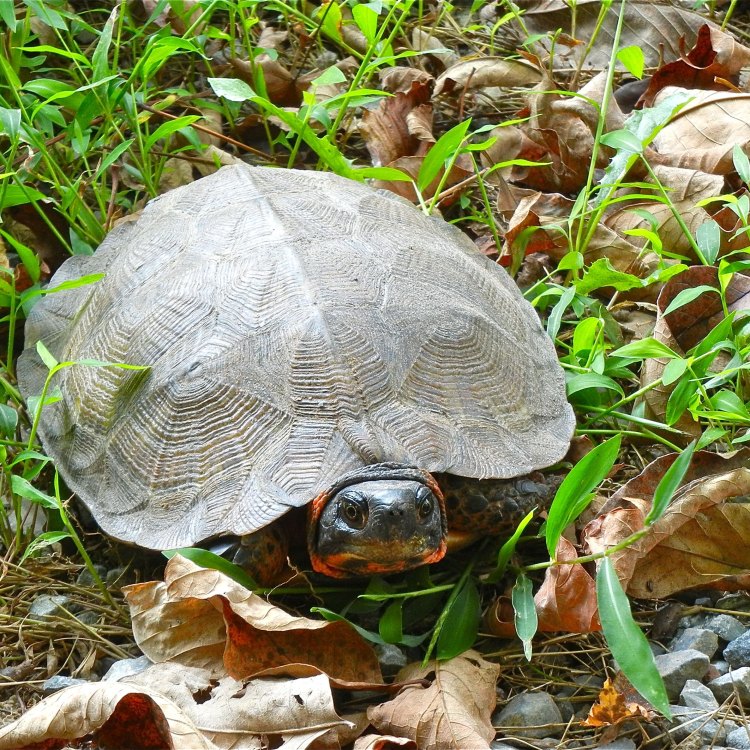
Wood Turtle
- Adult Size: 20-23 cm (7.9-9.1 in)
- Average Lifespan: 30-40 years
- Reproduction: Sexual
- Reproductive Behavior: Mating occurs in spring and eggs are laid in early summer
- Sound or Call: Males produce a low-pitched, guttural call during mating season
- Migration Pattern: Some individuals may migrate short distances to find suitable mating and nesting sites
- Social Groups: Solitary, but may gather in small groups during mating season
- Behavior: Wood Turtles are active during the day and spend their time both on land and in water. They are shy and tend to retreat into water or hide in vegetation when approached
- Threats: Habitat loss, road mortality, illegal collection for the pet trade, and pollution
- Conservation Status: Endangered
- Impact on Ecosystem: As an omnivorous species, Wood Turtles play a role in controlling populations of insects and small aquatic organisms, and they also help disperse seeds
- Human Use: Illegal collection for the pet trade
- Distinctive Features: Distinctive sculpted shell with pyramidal scutes, yellow or orange markings on head and limbs
- Interesting Facts: Wood Turtles are known for their ability to stack limbs and move with slow, deliberate motions. They are also capable of limited vocalizations and have been observed 'barking' and 'growling' when threatened
- Predator: Predators of Wood Turtles include raccoons, skunks, foxes, birds of prey, and large fish
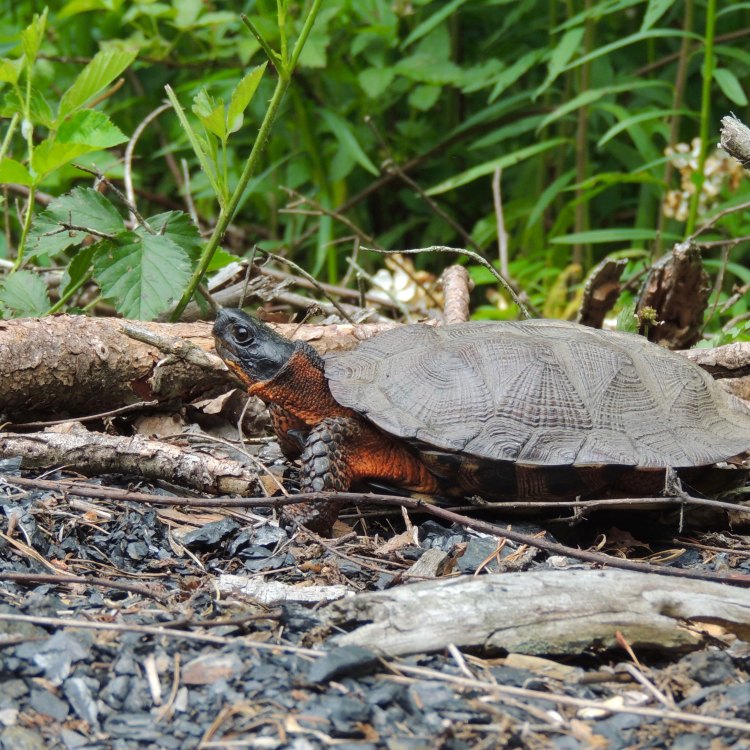
Glyptemys insculpta
The Marvelous World of the Endangered Wood Turtle
In the vast world of reptiles, there is one species that stands out for its unique features and endangered status - the Wood Turtle. These striking creatures are found in parts of North America and are known for their distinctive sculpted shells and distinctive vocalizations. They have a fascinating life cycle and behaviors that make them a crucial part of their ecosystem. In this article, we will dive into the world of Wood Turtles and discover what makes them such a remarkable and endangered species PeaceOfAnimals.Com.The Wood Turtle (Glyptemys insculpta) is a medium-sized freshwater turtle native to the eastern and central regions of North America. On average, they grow to be about 20-23 cm (7.9-9.1 in) in length, making them one of the larger species of North American turtles. They have a lifespan of 30-40 years in the wild, with some individuals living up to 60 years in captivity.
Wood Turtles are known for their remarkable sexual dimorphism, with males being significantly larger than females. They also have distinctive coloration, with the male's shell being more sculpted and colorful than the female's. The shell of a Wood Turtle is a combination of dark brown and black with yellow or orange markings on its head and limbs. This unique coloring makes them stand out from other turtle species and has led to their illegal collection for the pet trade, a major threat to their survival Wood Duck.
Reproduction for Wood Turtles is sexual, and mating occurs in the spring. The males produce a low-pitched, guttural call to attract females during this time. These vocalizations are an essential part of their mating behavior and distinguish them from other reptiles known for their silence.
After mating, the females will lay their eggs in early summer in a nest they dig in sandy soil or soft substrates. The average clutch size is around 5-12 eggs, and they are incubated for 55-70 days. The sex of the hatchlings is determined by the temperature of the nest, with warmer temperatures producing females and cooler temperatures producing males.
One of the most unique aspects of Wood Turtles is their migration pattern. While most turtles are non-migratory, some individuals may migrate short distances to find suitable mating and nesting sites. These movements are essential for maintaining healthy populations and gene flow among different populations.
Wood Turtles are solitary animals, but they may gather in small groups during the mating season. They are also known to bask in the sun together, but otherwise, they spend their time alone. They are most active during the day and can be sighted both on land and in water. Unlike other turtles, Wood Turtles are not known for basking for extended periods, and they tend to retreat into the water or hide in vegetation at the sign of danger.
Sadly, Wood Turtles are facing many threats in the wild, leading to their endangered status. Habitat loss is a significant concern, with the destruction of wetlands and their surrounding areas. The construction of roads has also led to an increase in road mortality, as these turtles are frequently hit by passing cars while crossing the road. Human activities such as illegal collection for the pet trade and pollution have also contributed to their decline.
The Wood Turtle's conservation status is endangered, with their global population decreasing by over 50% in the last 50 years. Efforts are being made to protect and conserve these creatures, including habitat restoration, educating the public about the importance of preserving these animals, and regulating the pet trade. These conservation efforts are crucial to ensuring the survival of this incredible species.
One of the essential roles that Wood Turtles play in their ecosystem is controlling populations of insects and small aquatic organisms. As omnivorous species, they help maintain a balance in their habitats. They also play a role in seed dispersal, as their diet includes a variety of fruits, making them vital for the growth and survival of plant species.
Despite their crucial role in their ecosystem, Wood Turtles are also hunted by predators, which include raccoons, skunks, foxes, birds of prey, and large fish. These predators pose a significant threat to the survival of Wood Turtles, especially as their populations continue to decline.
In addition to their unique features and behaviors, Wood Turtles have some fascinating abilities that make them even more remarkable. They are known for their ability to stack their limbs and move with slow, deliberate motions, making them seem almost robotic in their movements. This ability is useful when navigating rocky terrain and allows them to climb over obstacles with ease.
Wood Turtles also have limited vocalizations and have been observed "barking" and "growling" when threatened. These vocalizations are thought to be a form of communication, as well as a defense mechanism. It is just one of the many unique qualities that make this species stand out in the world of reptiles.
In conclusion, the Wood Turtle is a species that is highly deserving of our attention and protection. With their distinctive features, behaviors, and crucial role in their ecosystem, they are a vital part of our natural world. Despite facing many threats, conservation efforts are being made to ensure that these remarkable creatures continue to thrive. It is up to all of us to play our part in preserving and protecting these endangered species, so that future generations may also have the opportunity to experience the marvel of the Wood Turtle.
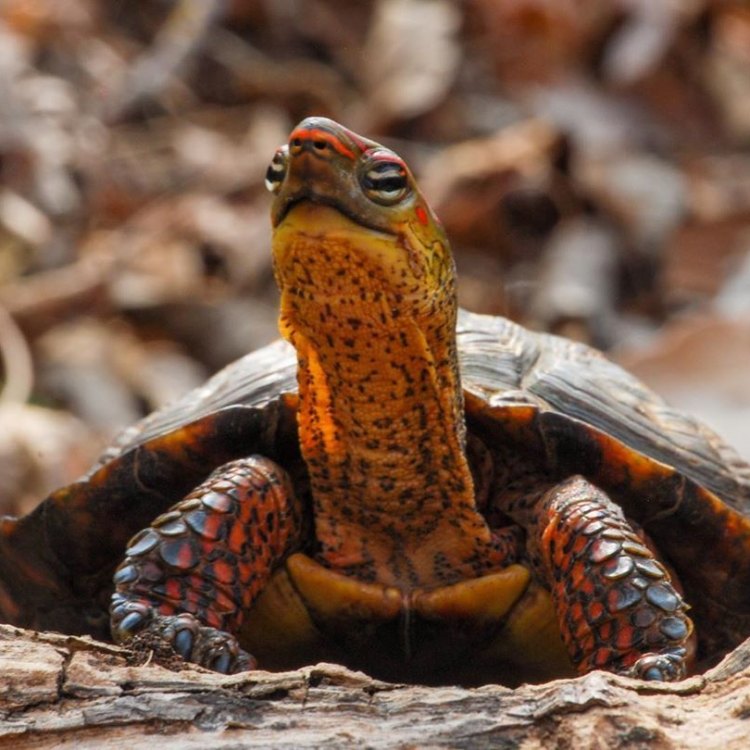
The Wood Turtle: A Unique and Endangered Species
Disclaimer: The content provided is for informational purposes only. We cannot guarantee the accuracy of the information on this page 100%. All information provided here may change without prior notice.



